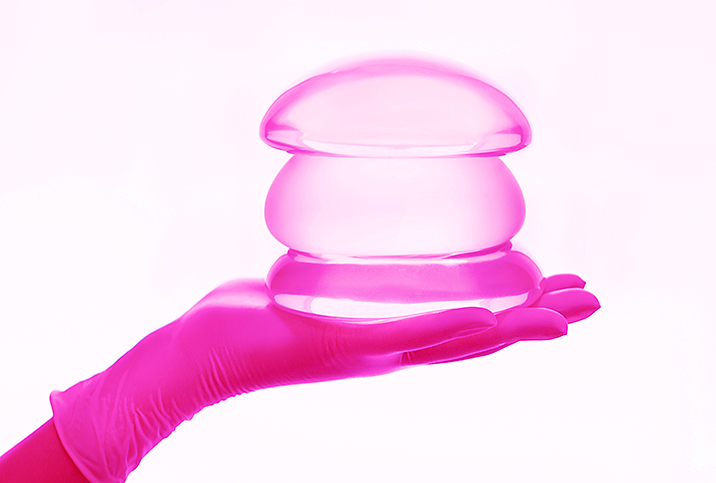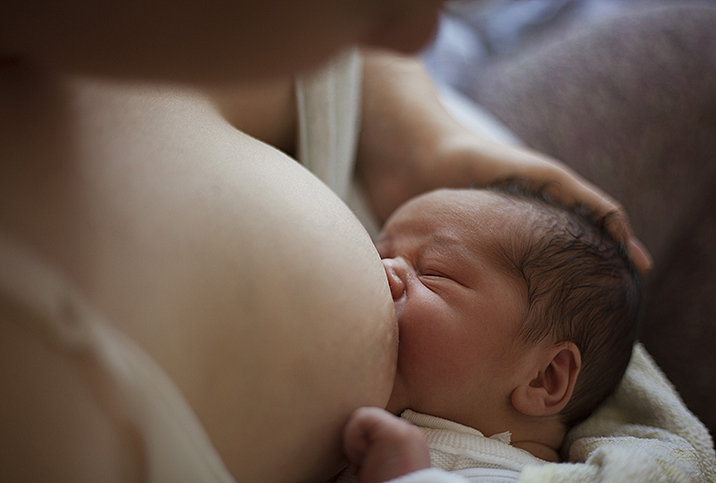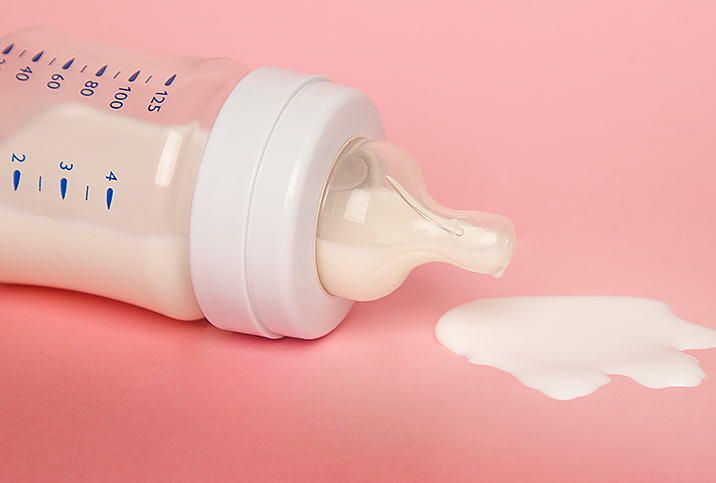Future Mothers Can Still Get Breast Implants

Breast implant surgery is one of the most popular cosmetic procedures around the world. From 2013 to 2018, 17.6 percent of all surgical procedures worldwide were breast augmentations. There are many reasons why a person would want implants, but before getting such a procedure, it is important to do your research and be aware of the different risks involved.
"Any elective surgery is a moment where a person needs to understand the risks and benefits of the procedure they're considering," said Sandra McGill, M.D., a Montreal-based plastic surgeon. "And aesthetic surgery is a particular area, because the surgery is not being done for a medical reason. It's done to make your body look more beautiful or harmonious."
On October 27, 2021, the Food and Drug Administration (FDA) strengthened breast implant risk communication to help those considering breast implants make an informed decision.
"The FDA now requires a black box warning on all breast implants so people know they are not considered lifetime devices and carry risks," said Constance M. Chen, M.D., a board-certified plastic surgeon and breast reconstruction specialist. "Patients are required by law to initial and sign an extensive patient decision checklist that outlines many potential risks and complications, including breast implant illness and Breast Implant Associated Anaplastic Large Cell Lymphoma."
Chen recommends her patients look into a few things before scheduling surgery:
- Updated silicone-gel-filled breast implant screening recommendations
- Device descriptions with a list of specific materials used
- A patient device card
- Updated information on the status of breast implant manufacturer post-approval studies
For women who want to get pregnant and breastfeed in the future, particular considerations need to be taken into account before they get a breast augmentation. Here is what future mothers should know before getting the procedure.
Expect you will need long-term care after your surgery
According to McGill, women will need to get another surgery at least once after their initial surgery.
"We're going to introduce a manufactured foreign body into their tissues. It's not necessarily going to be good forever," she said. Before the surgery, McGill spends a lot of time informing her patients about the various reasons they will need subsequent procedures. Soon after the surgery, patients may need to come back to treat bleeding and infection, although those complications are quite rare.
Women will have to come back for surgery if they experience implant rupture, where the implant starts to break down. After a certain number of years, implants will experience wear and tear and will need to be replaced.
"Sometimes they fail in 10 years. I've seen women who have kept their implants for 20 years and, amazingly, they're still intact," McGill said. "But if you've had an implant in place for 25 years or 30 years, it's probably not [in] good condition anymore."
Other women may want to come back later in life for a breast implant of a different size.
"For instance, a young woman who had no breasts gets a small breast augmentation when she's young," McGill explained. "But as life goes on and her body changes, notably due to pregnancy, the small implants don't suit her frame anymore. She might need to have a procedure to make them a little wider or a little fuller, so they look balanced."
Consider the time lapse between your implants and your pregnancy
McGill tells future mothers their breasts are likely to undergo significant changes during and after their pregnancy.
"A young woman gets an implant in her early 20s, and then gets pregnant later. Her breasts develop during her pregnancy and then they atrophy after she finishes nursing," she said. "After a couple of cycles of this phenomenon as she has her children, her implant might be in the right place, but her breast tissue is sagging on top of it." In such situations, McGill recommends they come back for a breast lift to recover the tissue lost during their pregnancies.
For these reasons, she advises women who are currently trying to get pregnant to wait until they are done breastfeeding to get their implants. Breast tissue loss during pregnancy may require women to pick a bigger implant size than they had originally intended. "But for young women who don't plan on having children for another five to seven years, I think implants are a reasonable choice to make today," McGill added.
Care for your implants while you breastfeed
For mothers who intend to breastfeed, the good news is that breast implants do not usually affect their ability to nurse their child. "There should be no impact on the ability to nurse on the letdown reflex, on the connections between the ducts and the gland," McGill said. There are, however, a few things to watch out for.
Breast milk contamination
According to McGill, there is a very small chance the breast milk will be contaminated by the implants, as it has been walled off from the actual apparatus of the breast during surgery. However, McGill explained, baby formula has more silicon in it than the breast milk of women with implants.
A 1998 comparative study published in the journal Plastic and Reconstructive Surgery compared silicon levels in lactating women with implants, those without, cow's milk and formula. The researchers found that "lactating women with silicone implants are similar to control women with respect to levels of silicon in their breast milk and blood. Silicon levels are 10 times higher in cow's milk and even higher in infant formulas."
However, Chen still advises her patients with silicone implants to get an MRI every two to three years to check for rupture, as it is often a silent rupture.
Nipple incision placement
Specialists warn women who want to breastfeed that the placement of their incision may impact their breastfeeding experience. McGill said nipple incisions may cut some milk ducts. "It can interfere potentially with a sensation of the nipple, which can have implications for latching, letdown and possibly disturb some of the ducts," she noted.
Her recommendation to her patients is to have the incision placed underneath the breast so as not to disrupt the breast tissue and any ducts. "What we're doing with that incision is just sneaking right behind the breast ledge. We go in the muscle or in a pocket to read directly beneath the mammary gland," she explained. "So the breast remains functional, even though there's an implant behind it."
Optimizing the nursing experience for all
Certain things need to be taken into account to ensure the most comfortable nursing experience. "Any scarring within the breast can potentially affect breastfeeding," Chen said. "Breast implants that are too large can lead to stretching or damage to nerves and cause numbness."
For that reason, she advises new mothers with implants to wear a supportive bra to support the weight of the engorged milk glands in addition to the breast implants.
And for trans men who wish to breastfeed, Chen recommends regular MRIs as well to check for damage and for them to wear an appropriately sized bra.
The bottom line
Getting implants with motherhood in the future is an important decision that shouldn't be taken lightly. Future mothers should take time to be informed and prepared as to what to expect. Getting second or third opinions from multiple doctors is wise, as they don't all have the same approach. An open dialogue with your healthcare providers is crucial, as it is highly likely you will need to go back in the future.

















